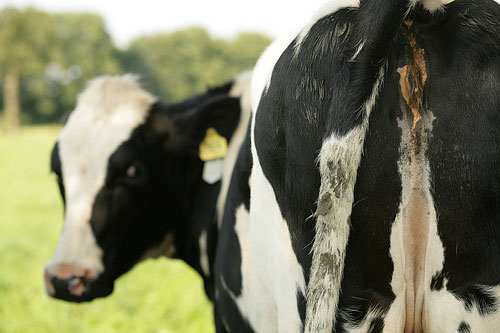This week’s post was co-written by Jennifer Powis, Sierra Club Senior Regional Representative in Texas.
Texas has the worst air quality in the country and it will take a concrete vision to fix it.
Unfortunately, state officials keep permitting coal plants instead of take real steps to clean the air. This week the Texas Commission on Environmental Quality approved a permit for the proposed Tenaska Trailblazer Coal plant in Sweetwater, Texas. This is the third coal plant permitted in 2010 and the eleventh coal plant recently permitted in Texas that has yet to go online.
Based on the state’s own reporting data, existing coal plants account for almost 50% of the air pollution in Texas and thus, lead the way in putting Texas in the number one position for mercury emissions, nitrogen oxide, and sulfur oxide – the precursors to ozone – and carbon dioxide.
In Governor Rick Perry’s 2008 energy report (PDF), he backed more electric generation from coal. But Governor Perry, times have changed. Burning coal for electricity never made sense from a public health standpoint, but now, it doesn’t even make sense from an economic standpoint.
Coal’s health risks (mercury-laden fish, bad air quality, etc…) and tremendous costs (sky-rocketing construction costs, impending global warming rules) make it a terrible investment. And in Texas, where the state already leads the nation in wind development and natural gas production, why would the Governor support coal?
Governor Perry’s energy report is behind the times, and so are his political appointees that sit as Commissioners for the Texas Commission on Environmental Quality (TCEQ). Recently, TCEQ Chairman Bryan Shaw said publicly that he”ll do whatever he can to issue a permit to the Las Brisas Energy Center located in Corpus Christi, Texas.
But in administrative proceedings before independent administrative law judges, Sierra Club attorneys’ have been successful not once but twice in demonstrating that Las Brisas’ proposed air pollution permit was too weak and failed to protect already overburdened communities along refinery row.
And the battle doesn’t stop with new coal. In Texas, there are already 17 coal plants that exist in the state, spewing over 14,000 pounds of mercury into the air every year, over six million pounds of carbon dioxide, and another 24 million pounds combined of the smog and haze forming compounds like nitrogen oxide and sulfur dioxide.
Unfortunately for the states surrounding Texas, this pollution affects more than Texans. Air modeling shows that the smog from these plants crosses state lines and is responsible for dozens of bad air days in Oklahoma, Arkansas and Louisiana; making Texas one terrible neighbor.
From the forests of East Texas to the mountaintops in Big Bend, haze and smog are obscuring beautiful vistas and forcing those that suffer from asthma or other lung diseases to stay inside. Almost all of Texas’ major metropolitan areas will fail to meet the Environmental Protection Agency’s coming rules on air quality and yet, Governor Perry continues to insist that new coal is the way to promote the economy.
Maybe Governor Perry and TCEQ Chairman Shaw should visit the pecan orchards that have been decimated by the Fayette Coal Plant, the coal plant powering the City of Austin. It is well known that the sulfur dioxide emissions from coal plants cause acid rain, and that burning coal is the number one producer of sulfur dioxide emissions for the state. Unfortunately, folks are only now starting to pay attention to the fact that burning coal is also ruining Texas’ agricultural heritage.
Texas can do better. Texas is at an energy crossroads, and should be leading the nation in its transition away from dirty coal and towards renewable energy such as wind and solar.


